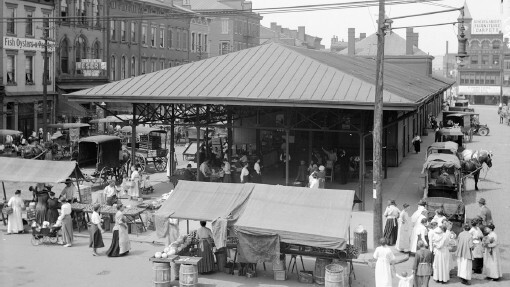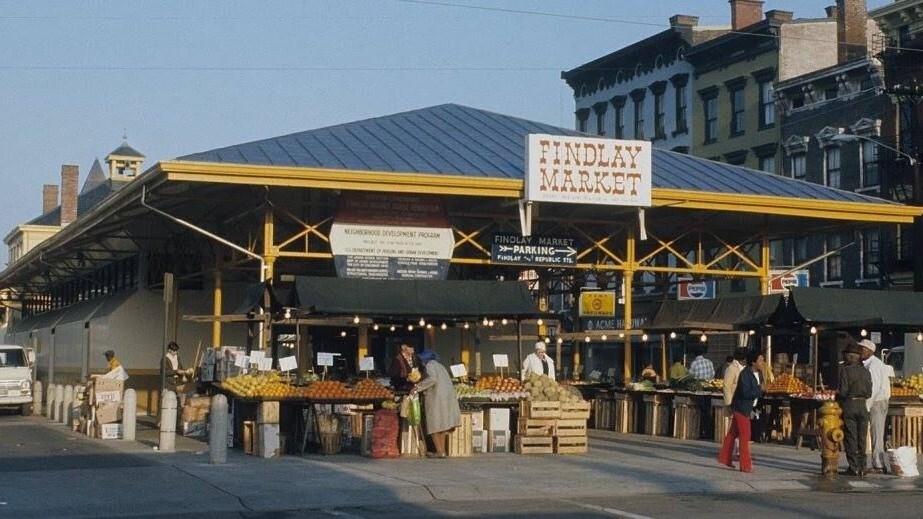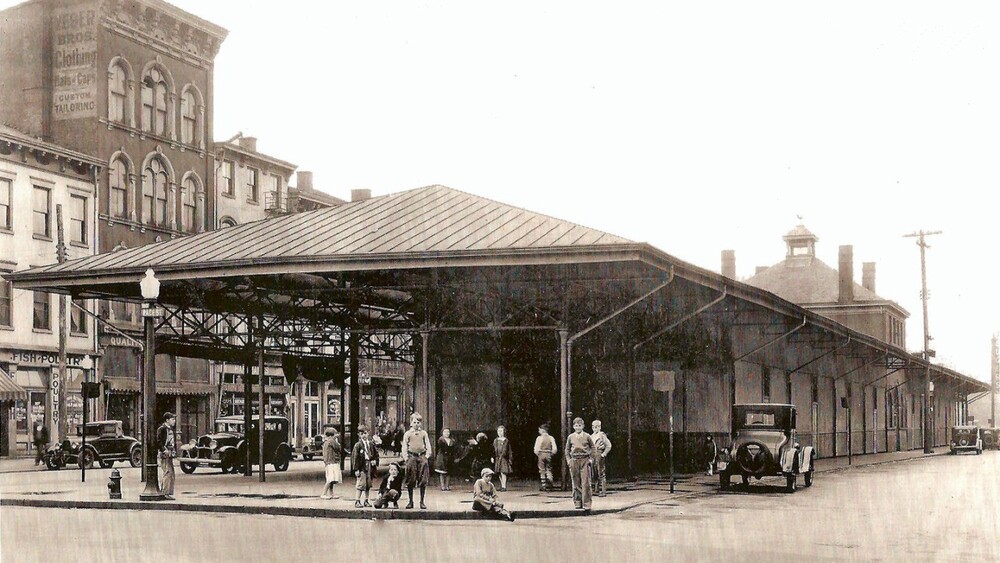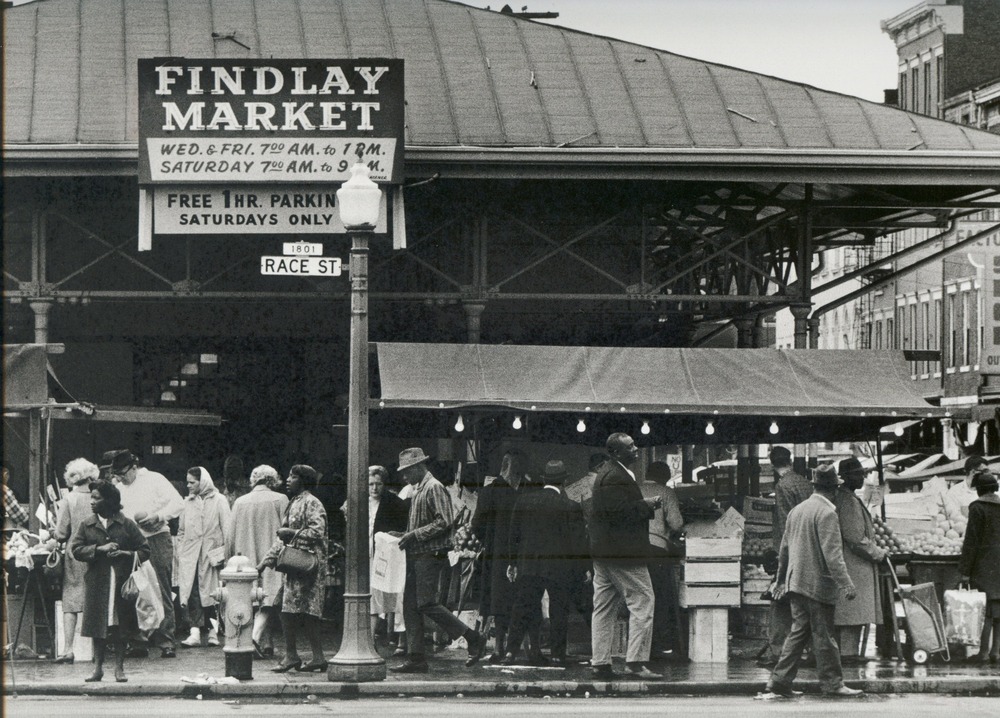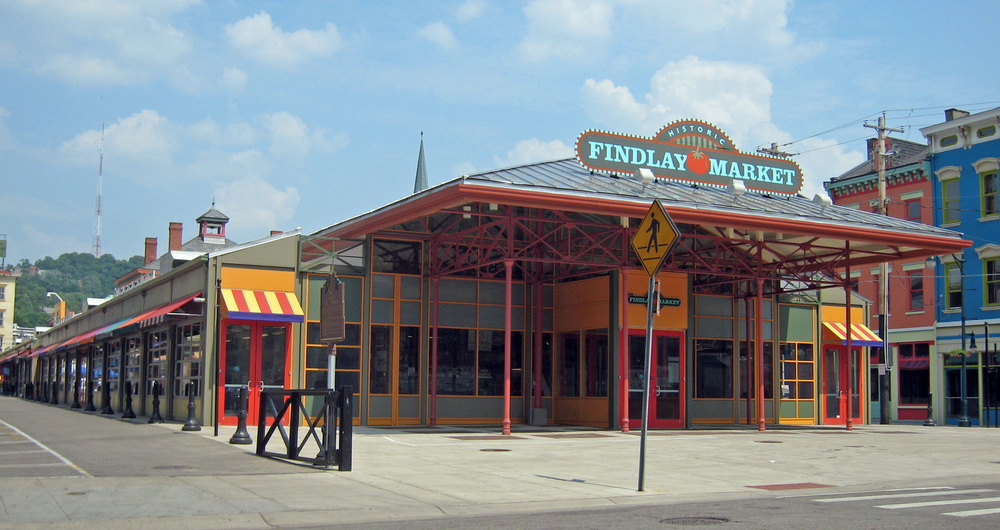
James Findlay was an early and prominent settler to Cincinnati. Born in 1770, he moved to Cincinnati with his wife, Jane, in 1793. Here, he ran a general merchandise store near the riverfront and later served as Mayor.
As an early speculator and investor in Cincinnati, he and a business partner bought a plot of land in the Northern Liberties, which was then a forest, and recorded a town plat in 1833, officially establishing that area as “Findlay’s Woods.” With this plot, he also established an open area for a public market and a general store, the first of its kind for the area. Unfortunately, James Findlay died in 1835 before he could build his market. His widow, Jane, inherited his land, but Findlay Market did not get built until Jane passed away in 1851.
Executors of Findlay’s estate gave the City of Cincinnati the land that Findlay had identified for the market. The original market house was an open-sided, open-air cast with a wrought-iron frame that opened in 1855. Findlay Market joined many other old markets, erected throughout the 1800s and early 1900s, all now demolished, including the 5th Street Market (demolished for Fountain Square); 6th Street Market (lasted until 1959); Pearl Street Market or “Lower Market” (demolished for Riverfront Stadium); Wade Street Market; Canal Market and then Court Street Market; Farmers Wholesale Market; and Jabez Elliot Flower Market (funded by Mary E. Holroyd to commemorate her husband Jabez Elliot; considered the largest enclosed flower market in the U.S. until its end in 1949).
The iron construction of the market house set Findlay Market apart from these other markets and was one of the reasons that Findlay Market—unlike the others that were made of brick or wood—was not demolished. The 1925 city plan (Cincinnati’s first) called for Findlay Market’s retention, in contrast to other urban markets, since municipal planners concluded that Findlay Market posed little threat to disrupting traffic or hindering new business. Already by the 1920s, the effects of outward movement/white flight and automobiles were impacting Cincinnati’s urban core, and city officials in 1925 called for a decentralized city—with only industry in the basin and the majority of people living in outlying suburbs. Seeing the downtown, Over-the-Rhine and the West End in this way meant that the 1925 plan recommended the closing of certain downtown markets. Findlay Market could remain, though, but city officials commented at the time that its “usefulness does not warrant any large expenditures for enlargement or even renewal.”
The market house has undergone several renovations throughout the years. First in 1902 and then again in 1915. These initial rehabs resulted in walls being added to the north and south sides of the market house for public health concerns. By the 1970s, the market house’s columns and frame were rusting, and its structure failed to meet city building code resulting in another renovation. This renovation focused on updating electrical wiring, installing new incandescent lighting fixtures, installing heating/AC, and tiling the floor. Modern plumbing was also added so that inside vendors had access to running water for the first time in the market house's history.
The market house underwent another renovation in 2002-2003, complete by 2004. The main aim of this rehab was to brighten up the interior. Windows were added where there were none before, and glass doors were installed on the outside to protect exterior vendors in the case of extreme weather.
Images

